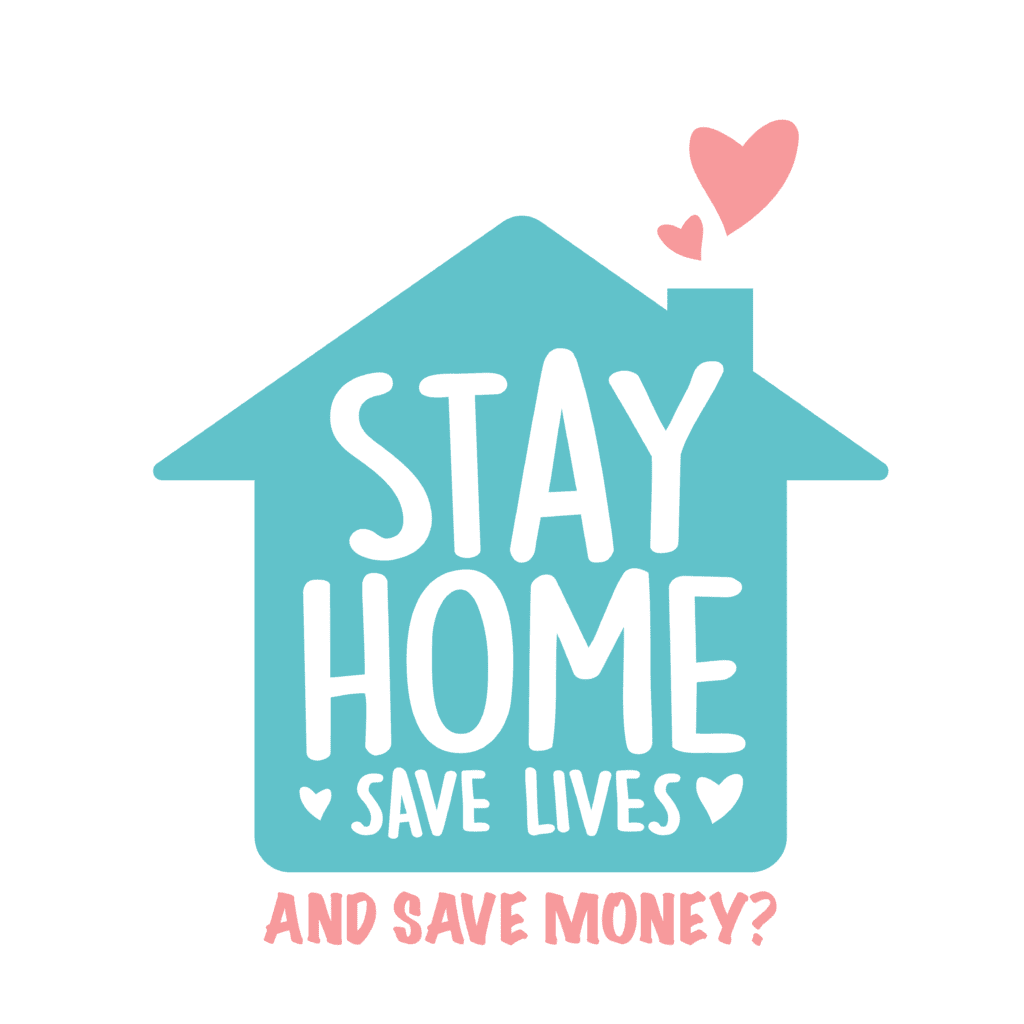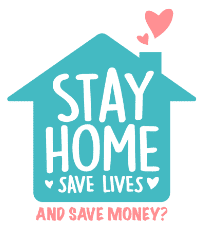Saving during a quarantine

During times when going out to movies, concerts, restaurants, hair salons and sporting events is simply not in the cards, it is really likely that our spending will go down. Mine sure has. Despite the huge NEGATIVE impact on the global economy that comes with that, for those who are fortunate to continue to have an income, this does create positive opportunities to save money. And, given the fact that no one really knows how long this crisis will continue, everyone, employed or not should be banking on a bit more uncertainty. Boosting savings will help with weathering this storm. Boosting savings affords you more opportunities to support local businesses and nonprofits who desperately need your support. And if enough people have boosted their savings, it could provide for a quicker economic turnaround once we’re on the other side of this pandemic.
There are plenty of ways to limit outflow, whether by necessity or by choice. I’ve been musing on a few:
Meal delivery services – are they worth it?
I’ve tried Blue Apron, HelloFresh, and Freshly. Pretty much without exception, these delivery services come in at about $10/meal. I think it goes without saying that if you are smart about your shopping and menu planning, you will be able to create meals for you and your family for less than that amount. Still, whether or not these services are of value remains a question for me.
I’ve certainly been guilty of spending more for the ingredients of a meal, especially when trying to pull off a menu that is ‘out of the ordinary’. A menu that calls for ‘fig paste’ or ‘crème fraiche’ has been known to send me on a multi-store search, dropping enough money to push the ‘per-serving’ cost well beyond what the delivery service would have cost, and leading to food waste. Relative to aspiring to be a French chef, utilizing a meal delivery service might save time and money.
Then there’s the ecological concerns. They do balance out somewhat, though. If by using a delivery service (most of whom tout the fact that they distribute on already established delivery routes) saves the planet from my driving to the store, and the packaging (sometimes more and sometimes less than what would have come from a shopping trip) is recyclable and not overly significant, I think these services perhaps come out about even.
In the end, if you’re smart about what you prepare for meals, and how you shop for them, you can financially and ecologically do better than delivery services. If you’re not a good planner and the result is a lot of food waste or trips to the local restaurant, a delivery service might actually help. Of the ones I’ve tried, Blue Apron is the only one I’ve seen that doesn’t require you to purchase a subscription. You can order when you want – and that can be a good solution for those who just want something to provide some diversity and to fill in the occasional gap around their meal plans.
Eating for long-term savings
One last word on food. Junk food’s cheap. Healthy food isn’t as cheap. To the degree you can purchase fresh, healthy produce and protein, you’ll probably save on healthcare costs in the future. And you’ll be helping with your overall physical ability to get through stressful times. Try not to save a few bucks at the cost of your long-term health!
What to do with the commute time?
I’ve come into several hours per week of time that was spent commuting and would like to make the most of that time. Last week, I committed to spending a couple of hours poring over credit card and bank statements to try to find subscriptions I wasn’t using much. Music streaming services, movie channels, magazines I used to read thoroughly, newspapers that stack up largely unread because the web version is more accessible. All of these showed up in the search.
Next week, I’m hoping to go through the garage and basement to see if there are things that can be sold or donated. Sadly, we’re not in an environment that’s conducive to yard sales, but between Ebay and Etsy, there are things that can go right now with little effort – and time spent organizing what could be donated or set out at a rummage sale can easily be deducted from the newfound time that’s not being spent on the road.
Beware the $64 tomato
Over the past decade, gardening, for me, has gone from a curiosity to a minor obsession. If you routinely shop for seeds and gardening supplies, you’ll agree with me that this is one area of the economy that has not slowed down. Stuck at home and looking to be thrifty, the idea of growing your own vegetables has caught on – and led to a run on seeds and supplies.
There is the possibility that you can save money with a home garden. But it’s not as easy as it seems. At first glance, it appears to be a no-brainer. Buy a $3 packet of tomato seeds – each plant produces dozens of tomatoes and your get around 50 seeds in a pack! How can you go wrong?
In his book “The $64 Tomato: How One Man Nearly Lost His Sanity, Spent a Fortune and Endured an Existential Crisis in the Quest for the Perfect Garden”, William Alexander lays out exactly how this can go wrong. Starting a garden from scratch at home requires a decent outlay of time and materials. Needing to have the best tools, most attractive layout and designer crops only pushes the costs up. Most people starting a garden will spend many times what they would have spent on simply buying the produce.
Is it worth the cost and effort over time? As someone who spends most weekends working on community gardening projects, I would say ‘yes’. But if your objective is to save money, and you don’t already have a scalable home garden and an uncanny knack for home composting, re-using materials, and battling pests in hand-to-hand combat, stick to the produce aisle or the farmers market.
Oh, and the $75 workout
I pay the YMCA $40/month to be a member. I actually use the YMCA to work out a handful of times per year. I do want to support the YMCA. I’ll nix the membership make a tax-deductible contribution to them. Everybody wins.
Breaking the Amazon Prime habit
For me, and I suspect for many, the process of finding you’re out of WD-40 and saying ‘Alexa, send me WD-40’ leads to more money going out the door than without such conveniences. If you haven’t noticed, Alexa isn’t sending stuff as quickly as she used to during this pandemic. That’s a good opportunity to go into your shopping cart from time to time and backing out things you don’t absolutely need.
Mortgage rate reduction
In the existing interest rate environment, refinancing your mortgage is an option. Your bank knows this and would rather keep your business than have you refinance elsewhere. For an up-front fee, some banks are willing to simply reduce your interest rate. Sometimes this is for a period of time, and sometimes, it’s for the duration of the mortgage. The good thing is that you may not need to go through all of the costs and red tape involved in a refinance. This is most likely to work when the bank actually owns the mortgage, which is typically the case with jumbo or adjustable rate mortgages. And, if a refinancing is what it takes, take some time to do the math to make sure that you’ll still save money after refinancing expenses. Mortgages with longer times left can often make sense to refinance even if the savings is only half a percent.
Auto insurance rate reduction
Your car insurance premiums might be lower these days. Many insurance companies are lowering rates, because people aren’t driving and as a result claim activity is way down. Double check to make sure that your insurer is lowering rates for this period. If they’re not, ask them to. If they won’t, it might be a good time to shop around. Same goes for the camper, the boat, and all the other things you insure that are sitting around unused.
Cellphone Data – can you lower the bill?
If you’re like me, much of the data you consume on your smart device is the result of being on the road and in need of keeping up with email and news. If you’re NOT on the road, much of what you would normally download over cellular service is coming from your home WiFi. Check with your carrier. T-Mobile is offering a 2-GB per month plan for $15/month. If you have cell phone plans for your kids so that you can keep track of their whereabouts, you might think of stopping those plans. You know exactly where they are all day now.
These are just a few items I’ve brainstormed. Hopefully, you can come up with more. Finding ways to save over the long run will hopefully limit the pain for some, and for others will provide even greater opportunities down the road. Stay home, stay safe, and stay physically AND financially healthy!



